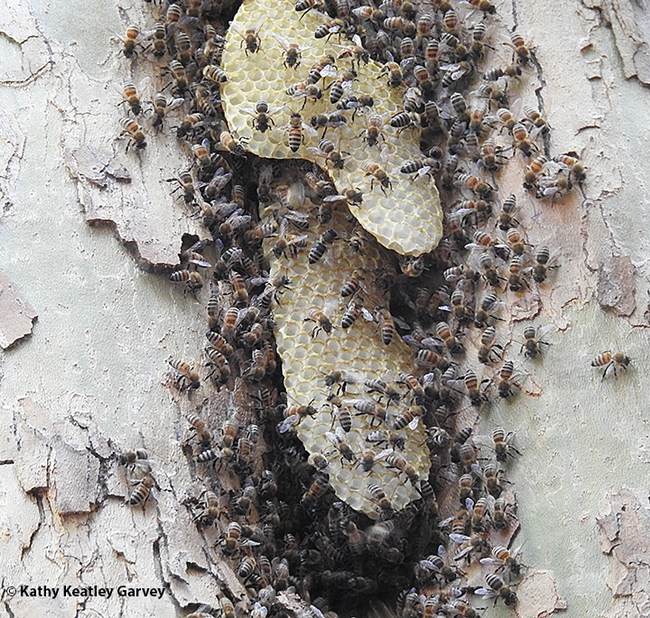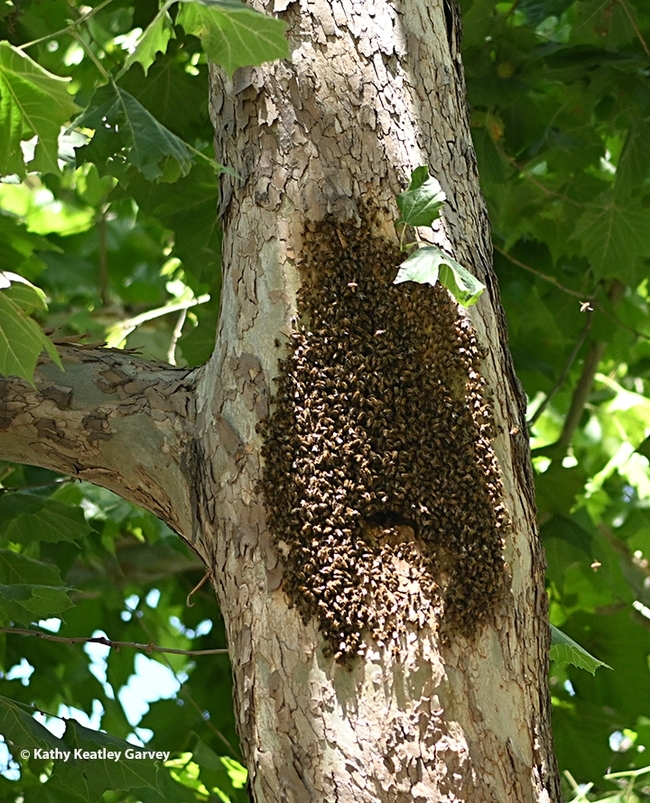Back in July 2023, we wrote a Bug Squad blog about a feral bee colony inside a cavity of a sycamore tree on the UC Davis campus.
The triple-digit temperatures resulted in bee bearding.
Bees engage in bearding (forming a "beard" outside their hive or colony) when the temperature soars and it's too hot to maintain the internal 94 degree temperature. As the late Extension apiculturist Eric Mussen (1944-2022) of the UC Davis Department of Entomology and Nematology used to say: All honey bee colonies must maintain a temperature of 94 degrees, or the brood (eggs, larvae and pupae), will be adversely impacted. When the inside temperature rises above 94 Fahrenheit, bees resort to (1) bringing more water into the colony to cool it down and (2) bee bearding, meaning that some of the adults will leave the colony and "beard" just outside the entrance to help reduce the heat load inside. The "bearders" are helping their brothers and sisters-to-be survive.
Today the sycamore tree colony is expanding. With binoculars or a telephoto lens, you can clearly see the comb build-up.
It's a beautiful, incredible sight--Mother Nature at her finest--and something we never tire of seeing. Seeing a wild bee colony is bee-lieving.
Attached Images:

Close-up of a feral bee colony living a sycamore tree on the UC Davis campus. Image taken Sunday, Sept. 3, 2023. (Photo by Kathy Keatley Garvey)

A wide-angle view of the feral bee colony that is living in a sycamore tree cavity on the UC Davis campus. Image taken Sept. 3, 2023. (Photo by Kathy Keatley Garvey)

This was the hot-weather scene in July 2023 when bees bearded outside their home in a sycamore tree on the UC Davis campus. (Photo by Kathy Keatley Garvey)